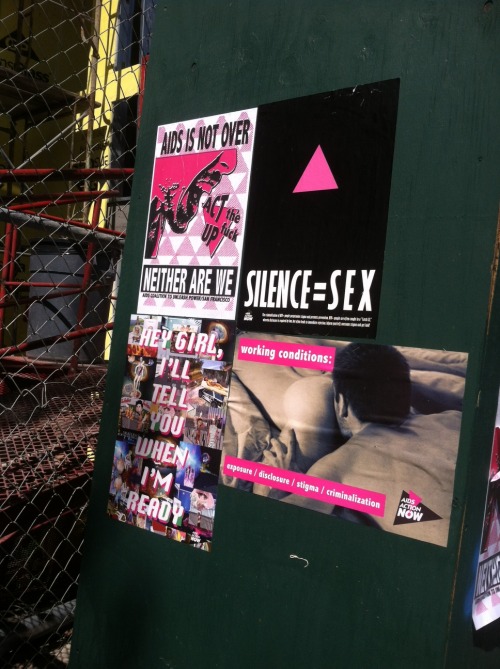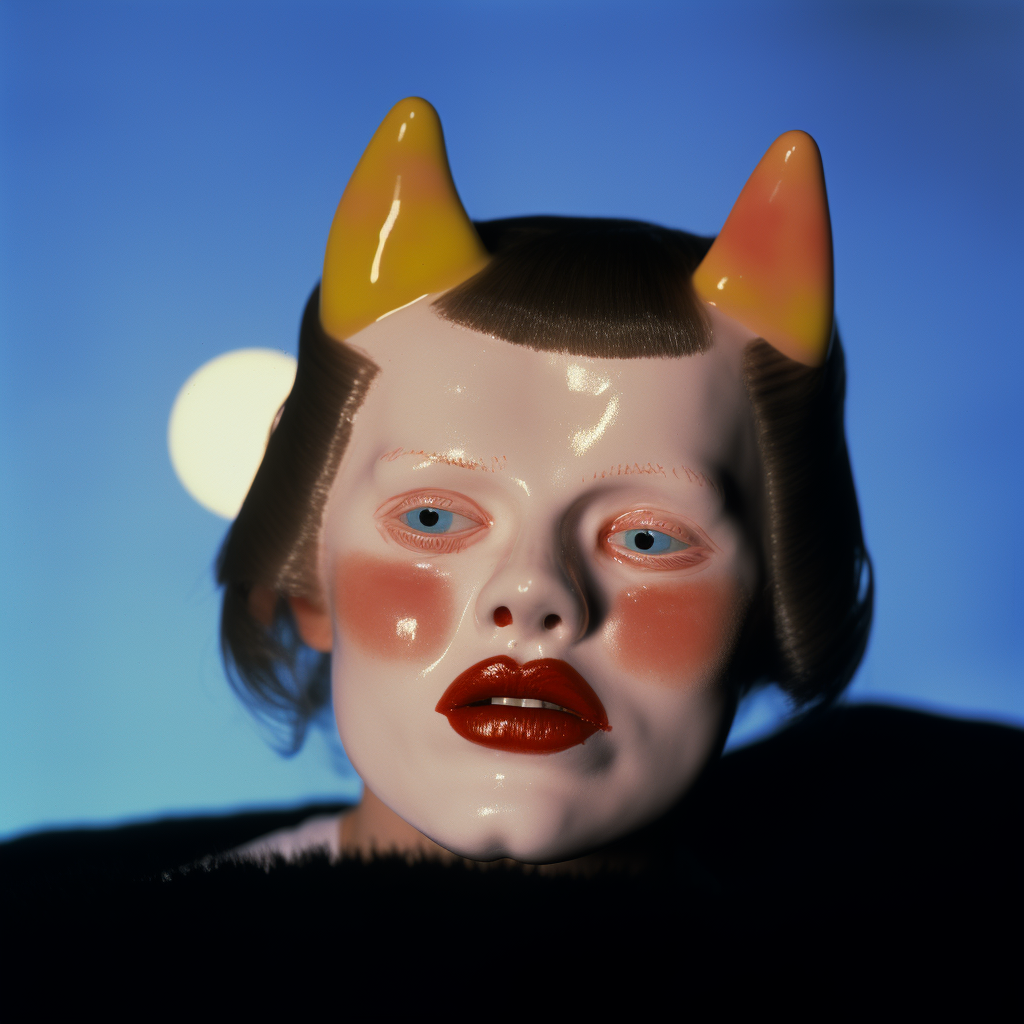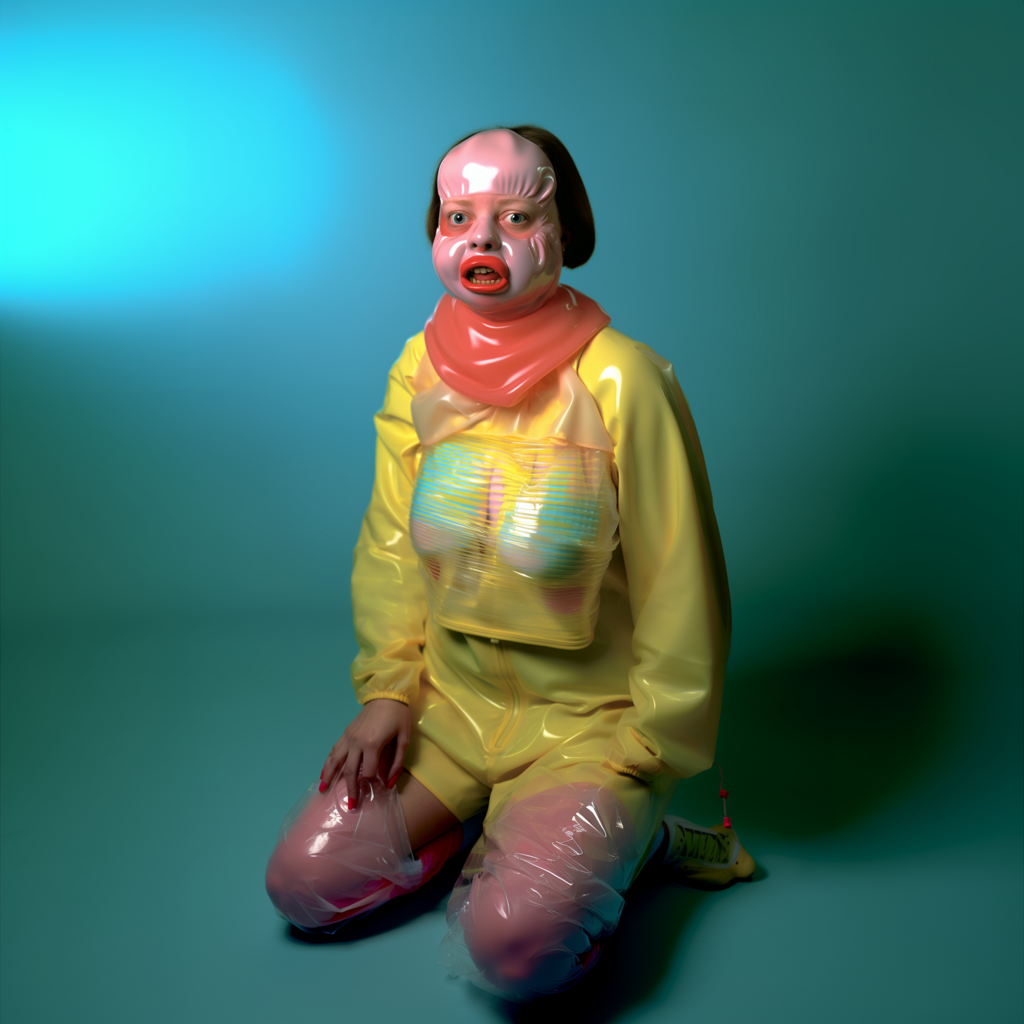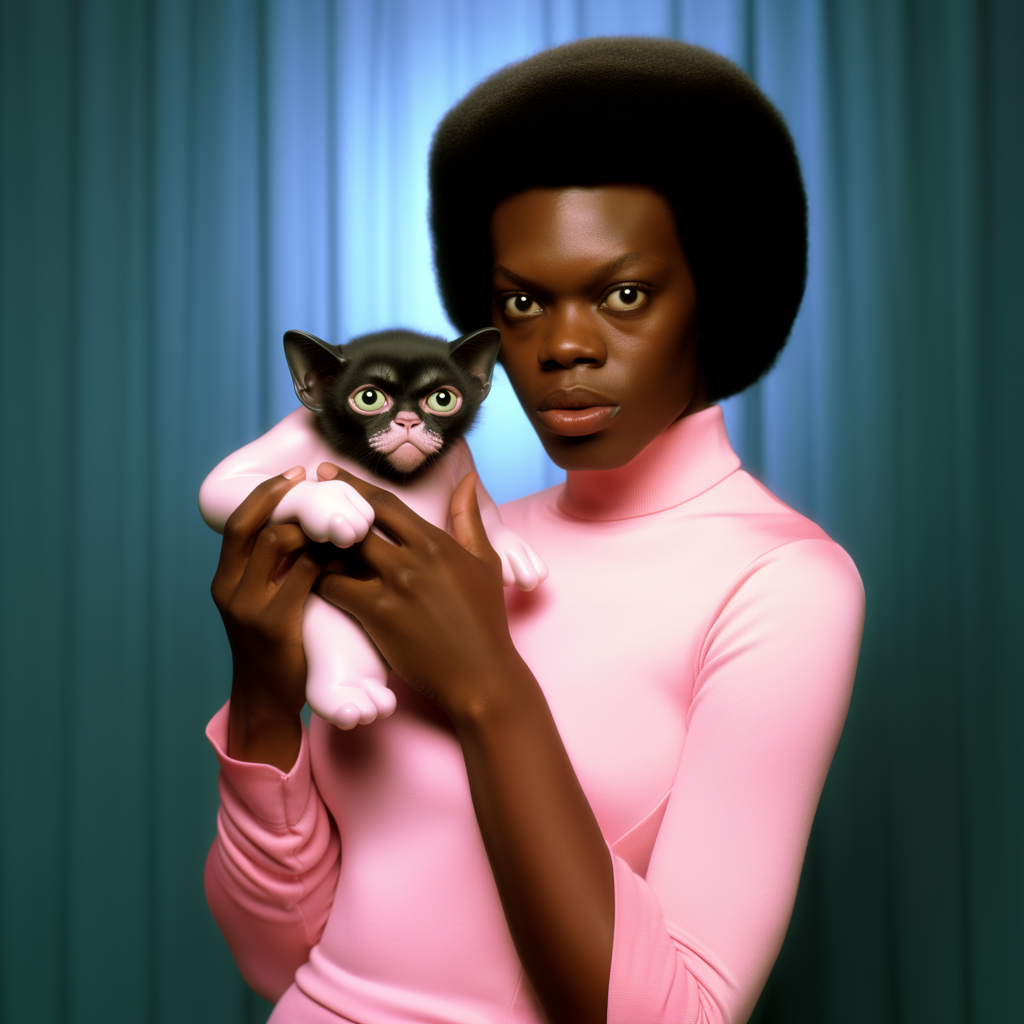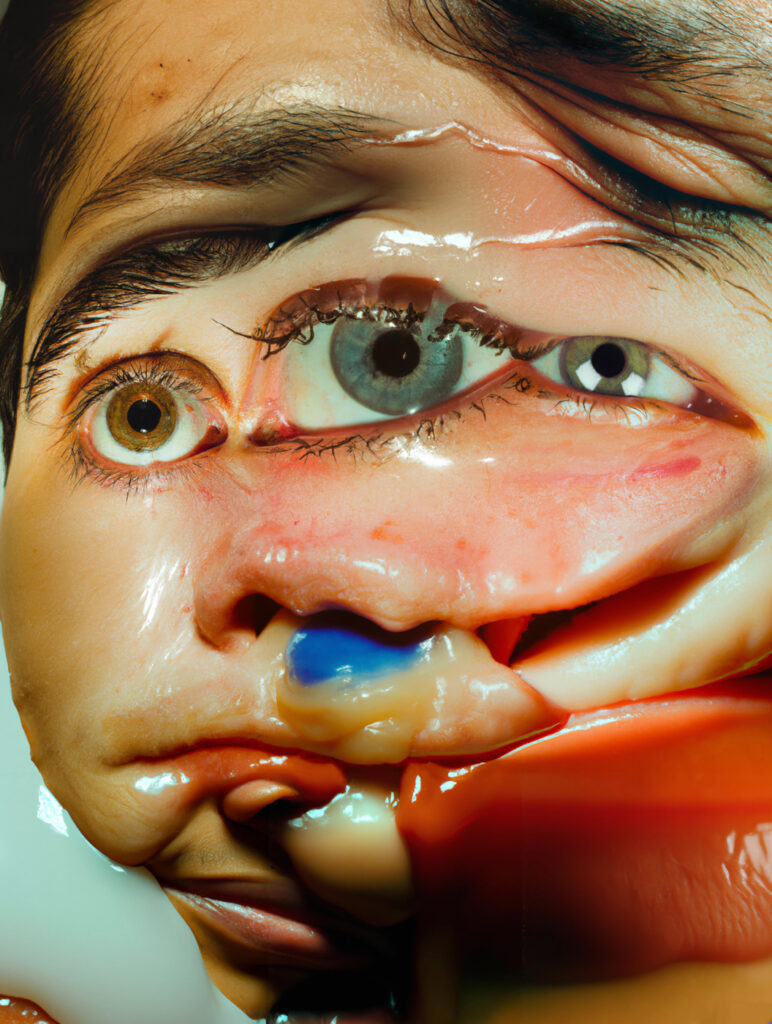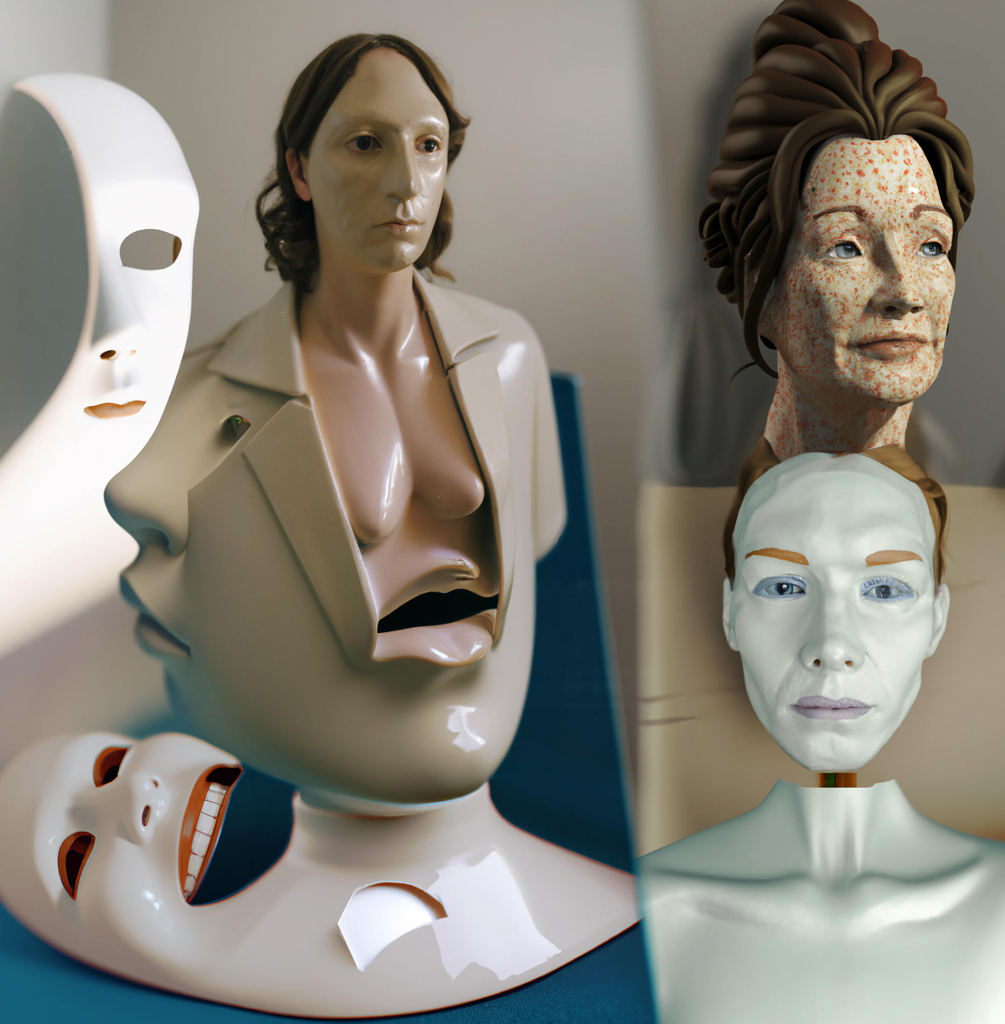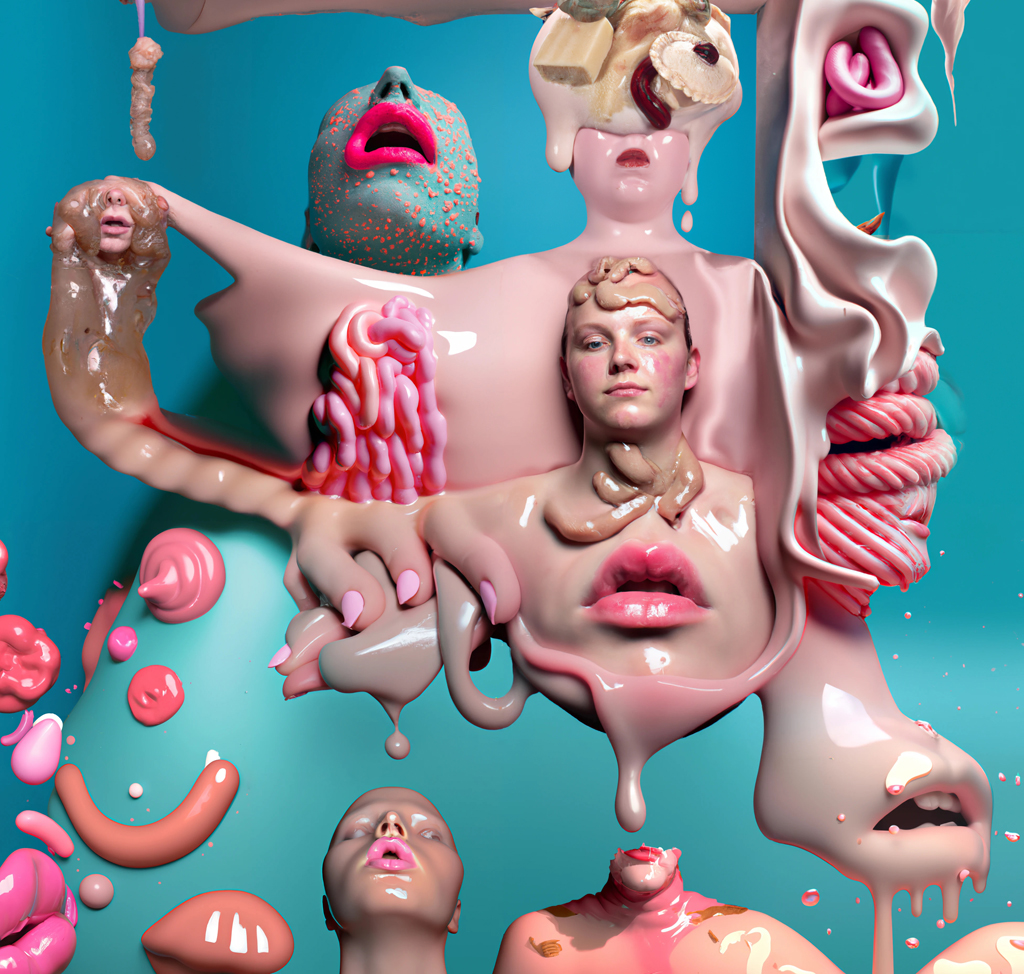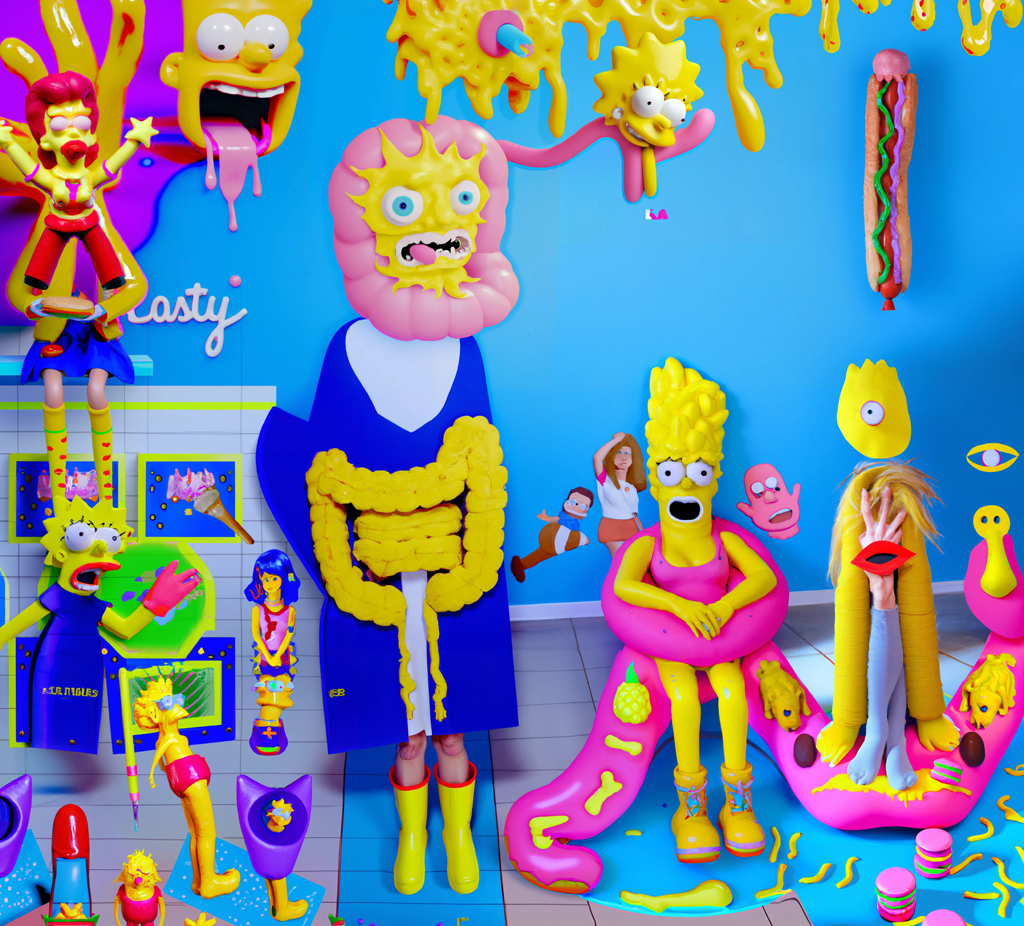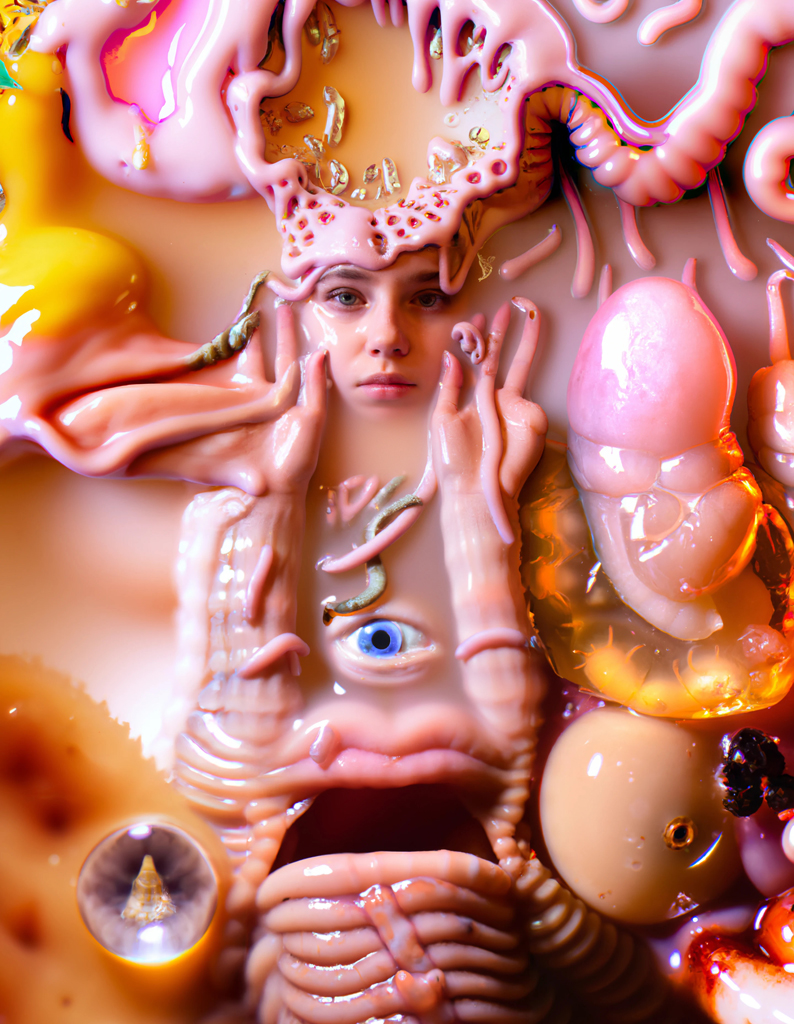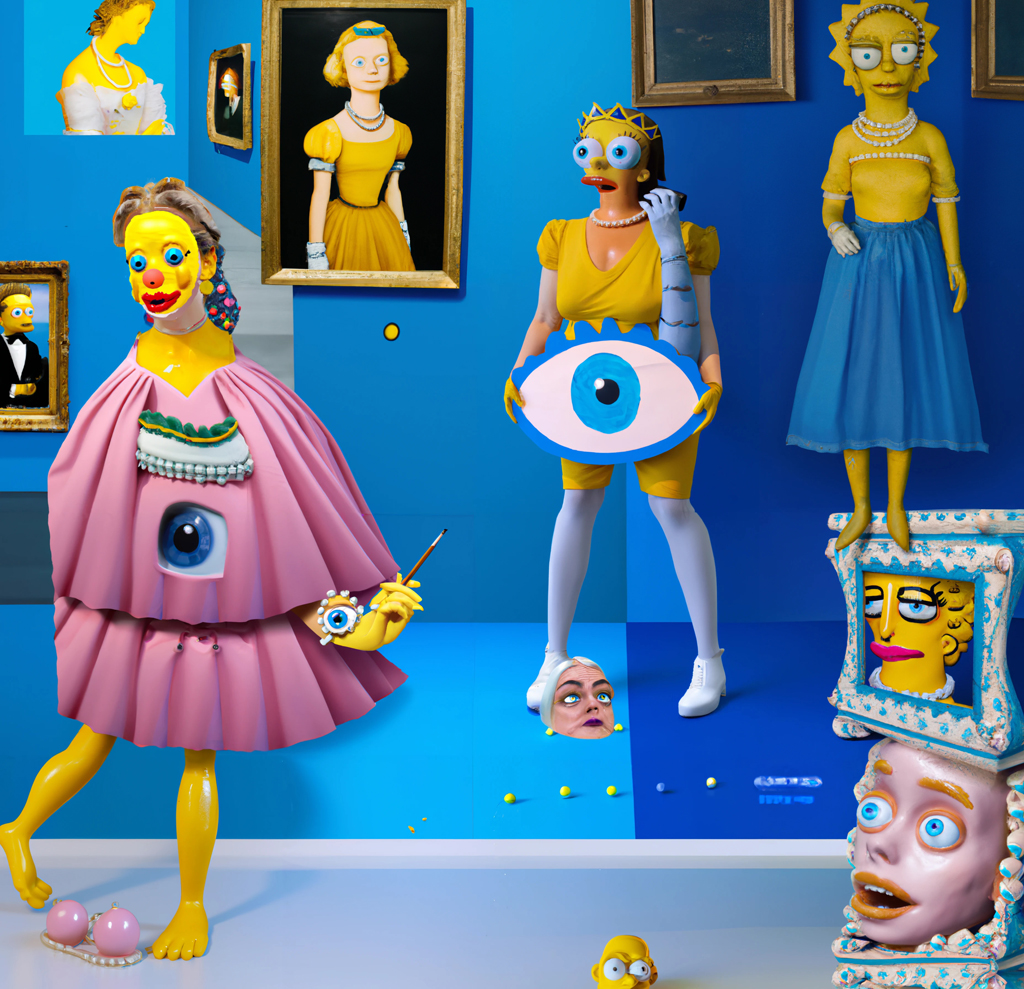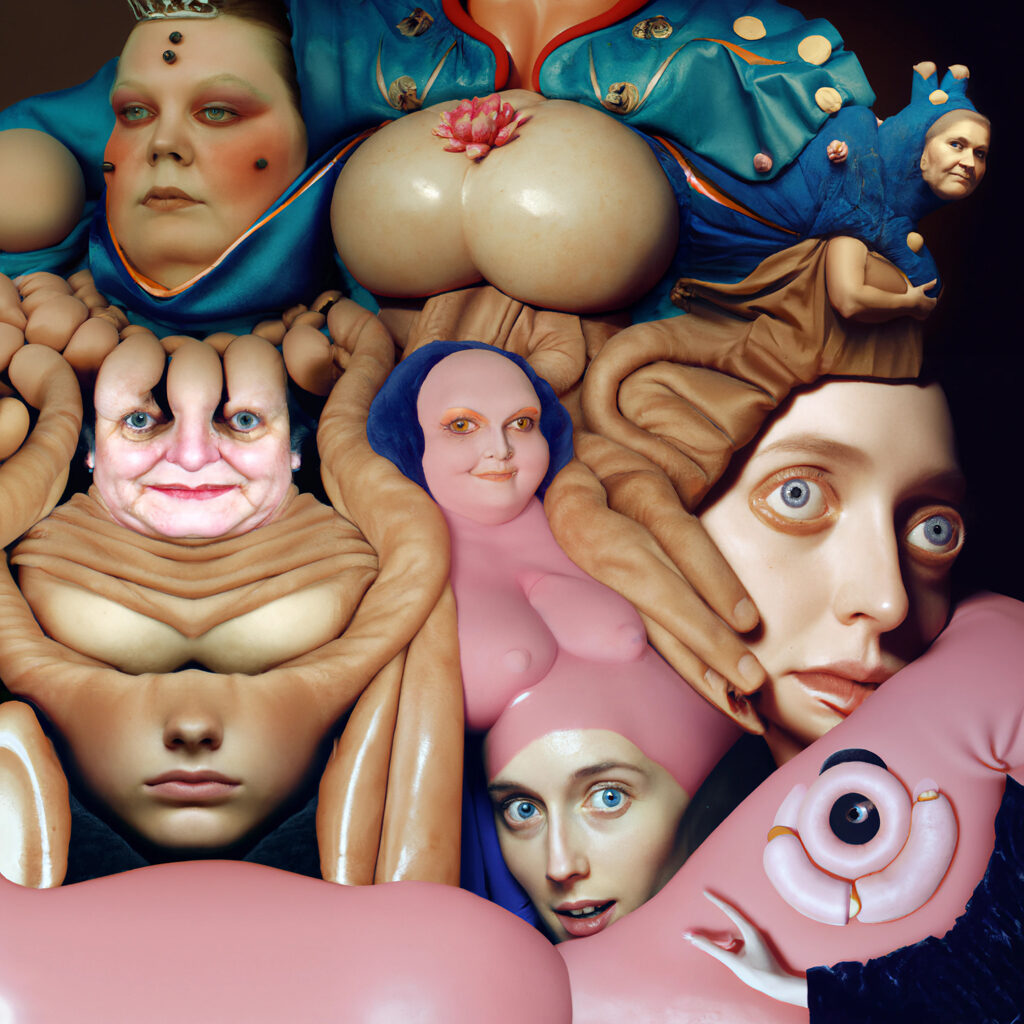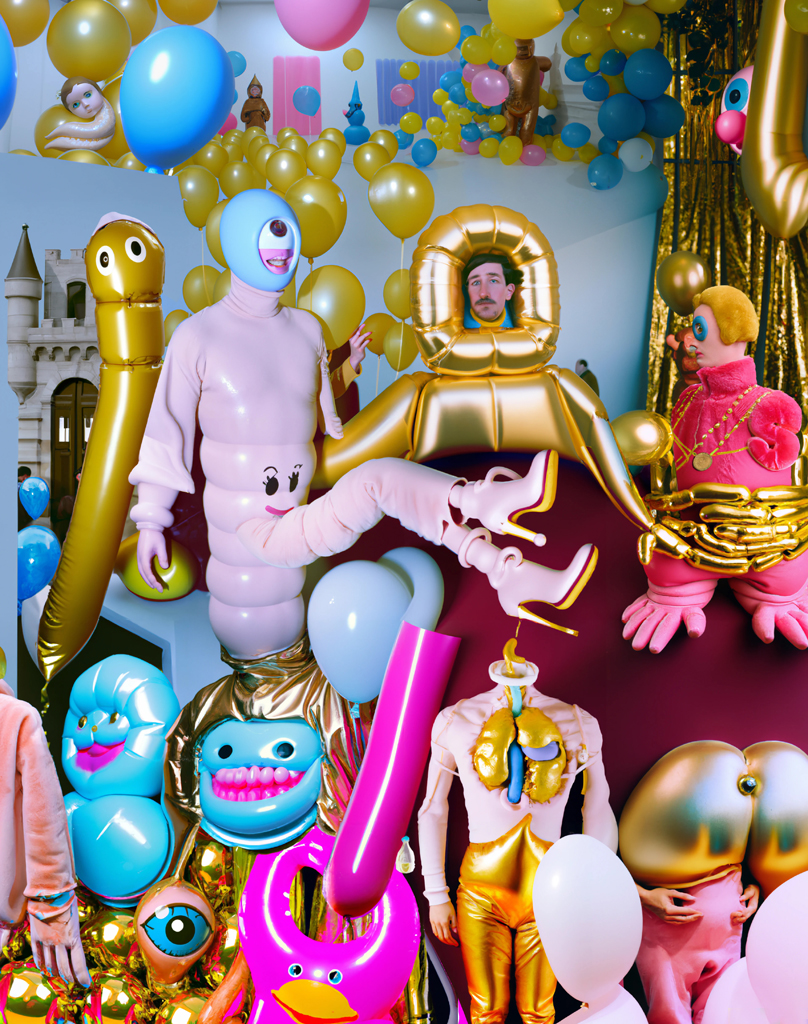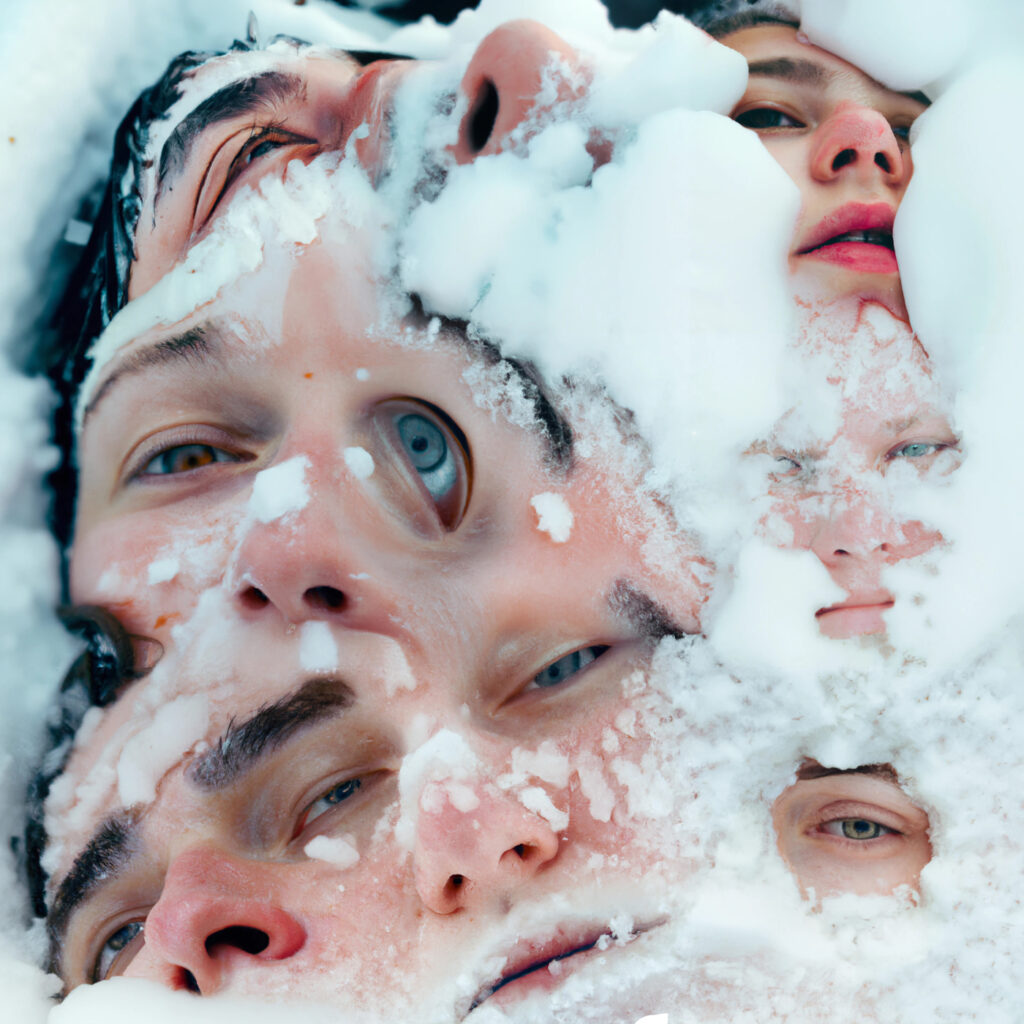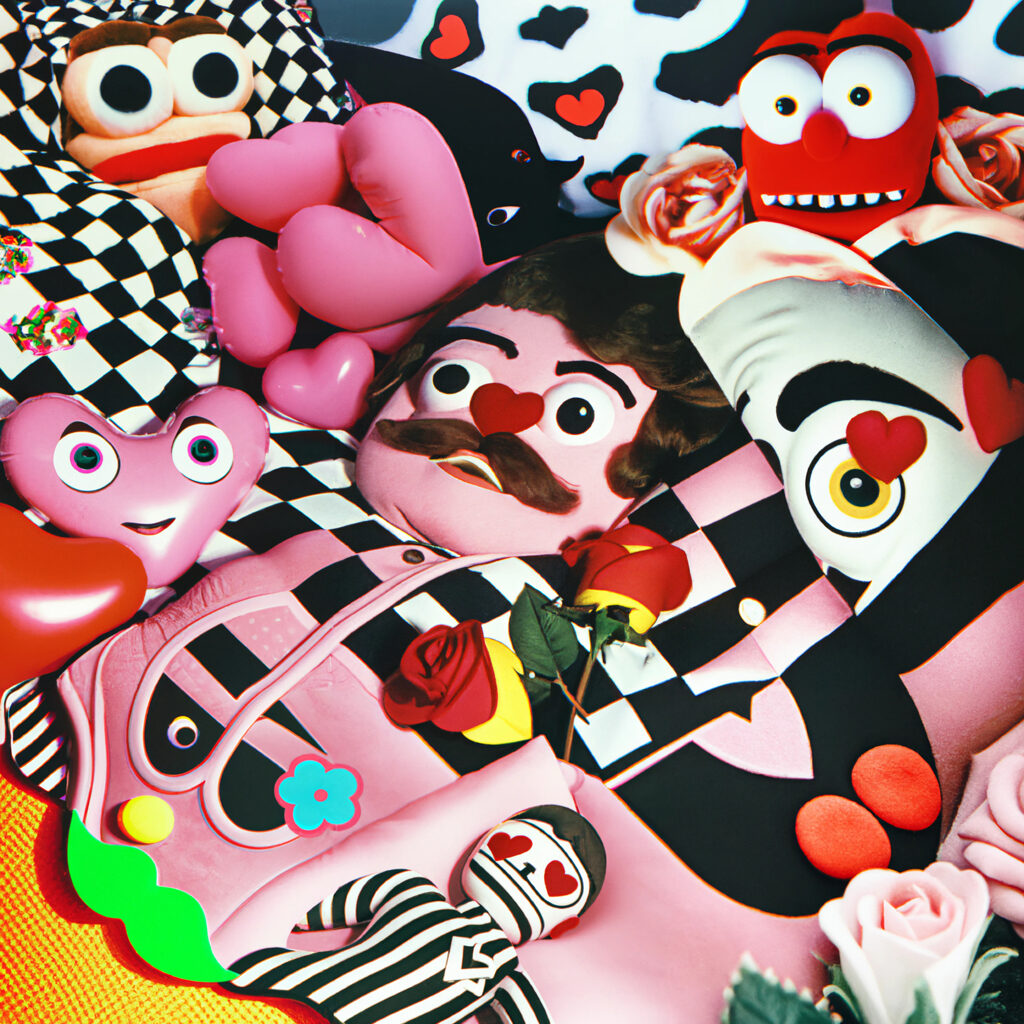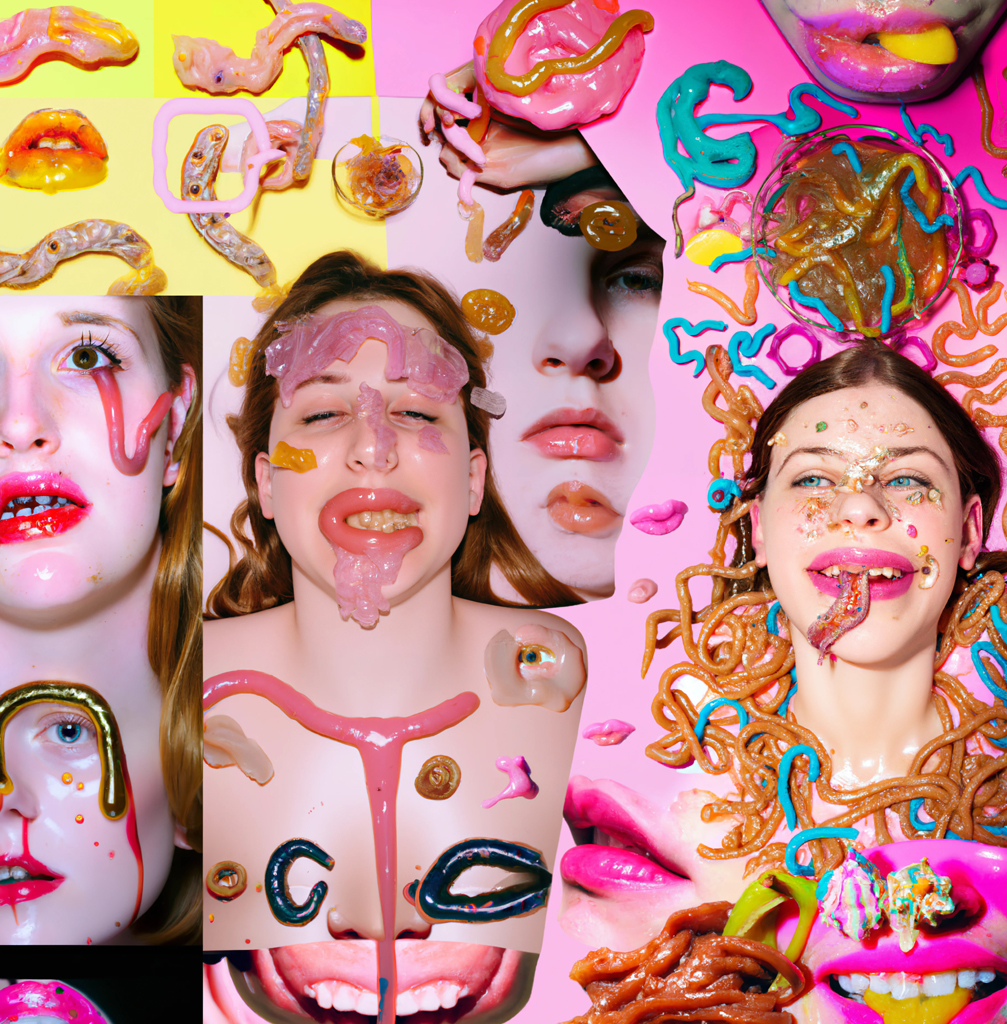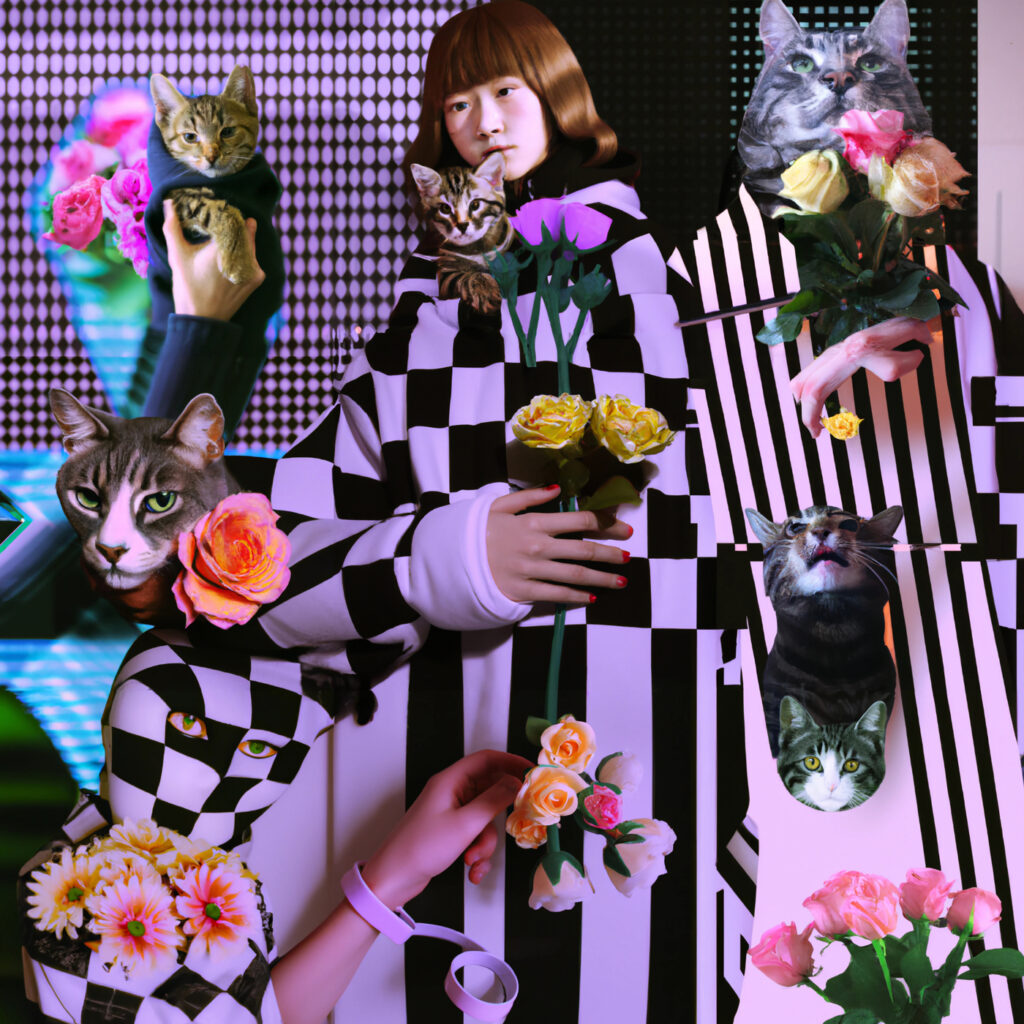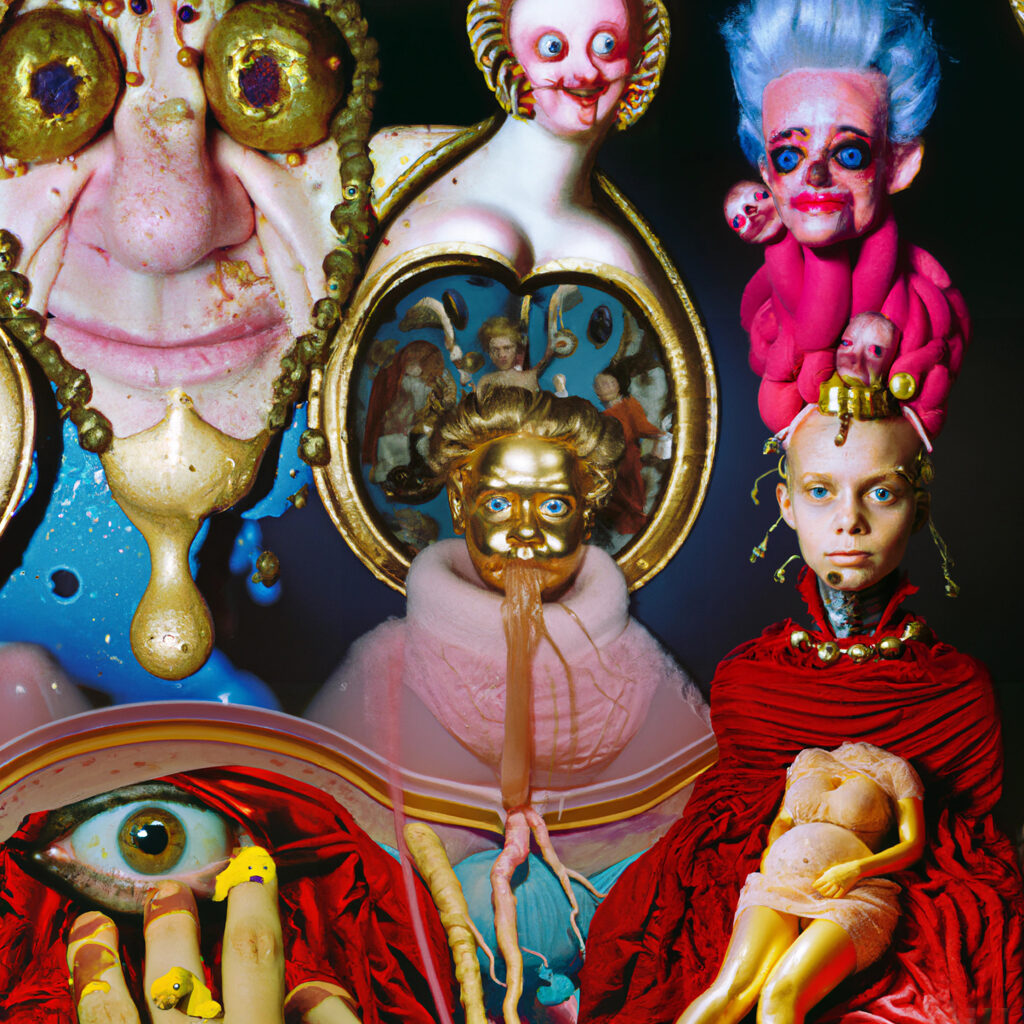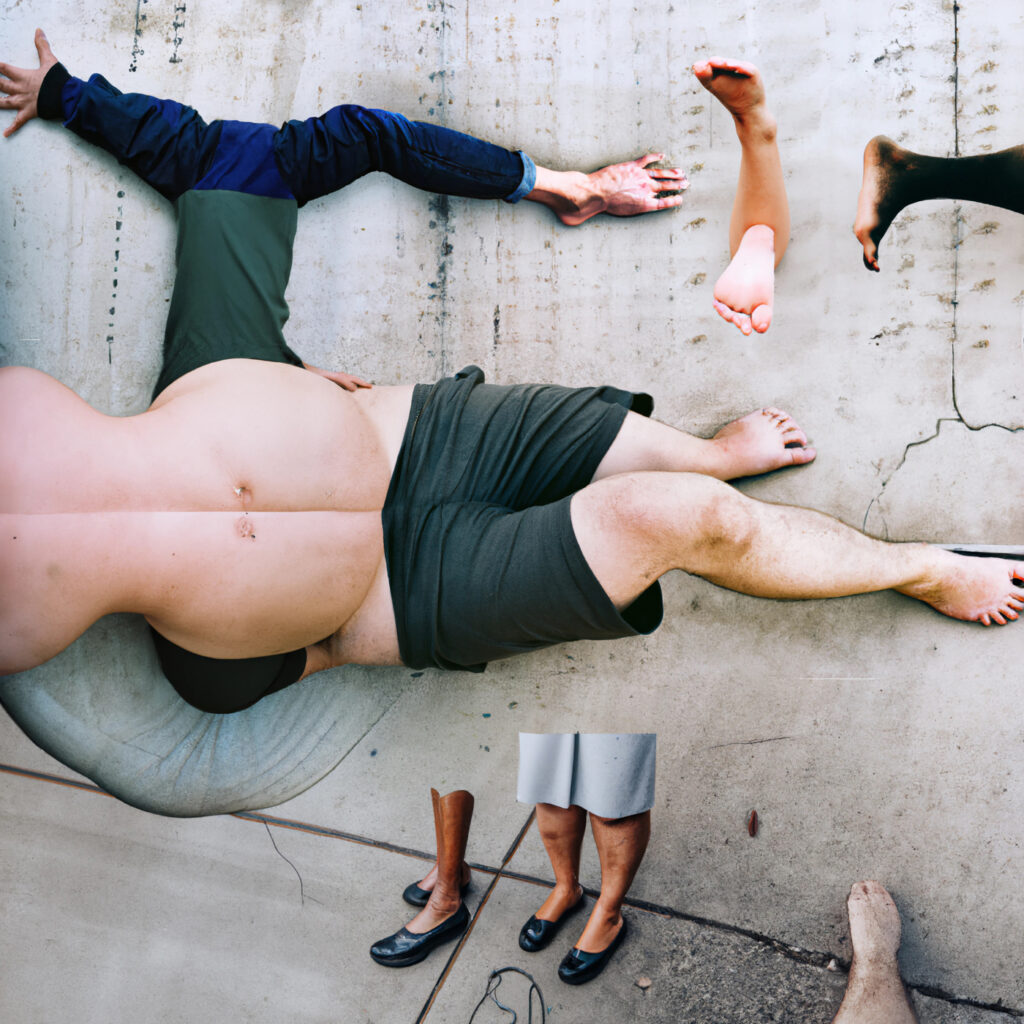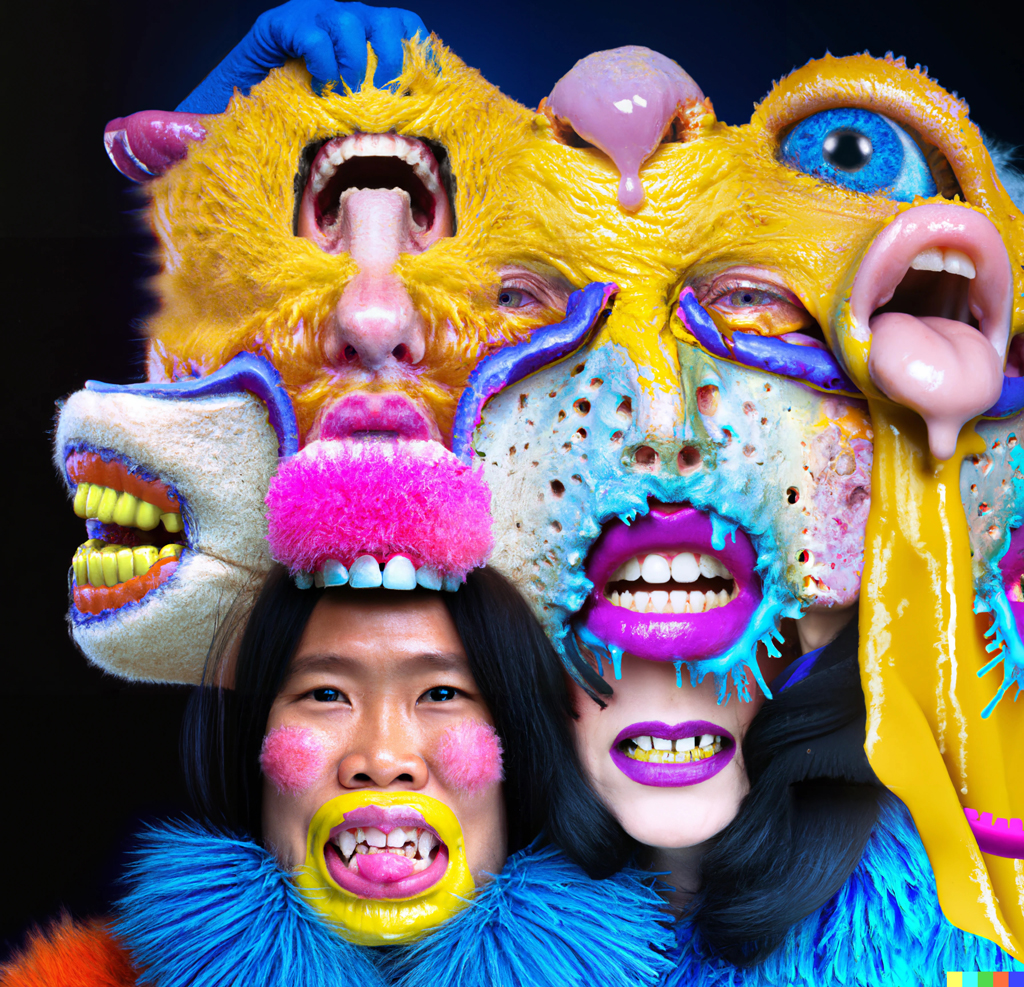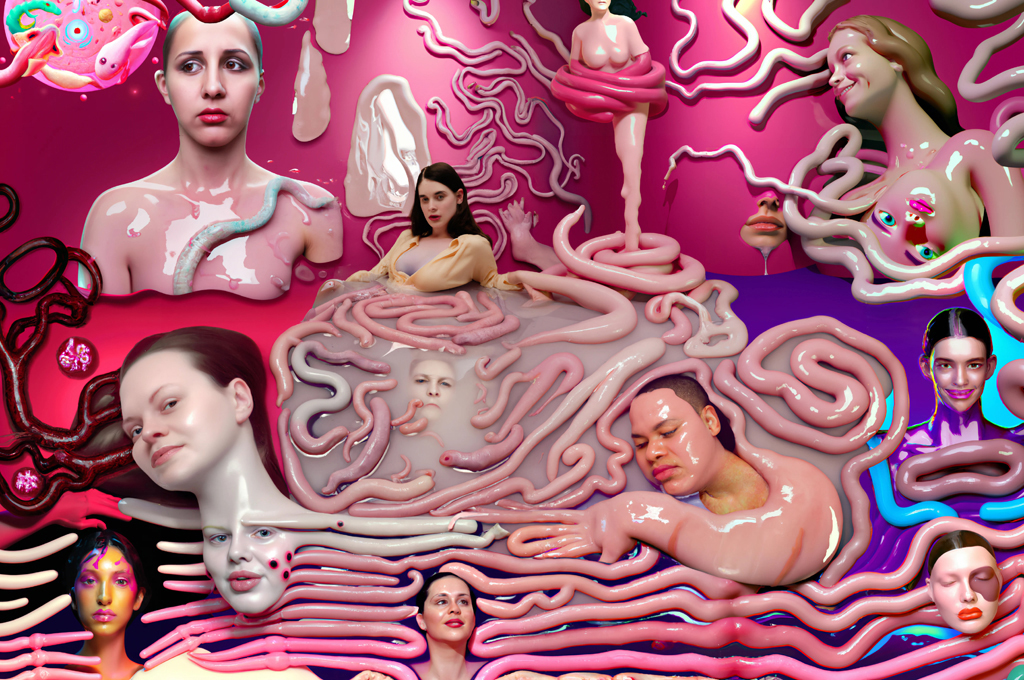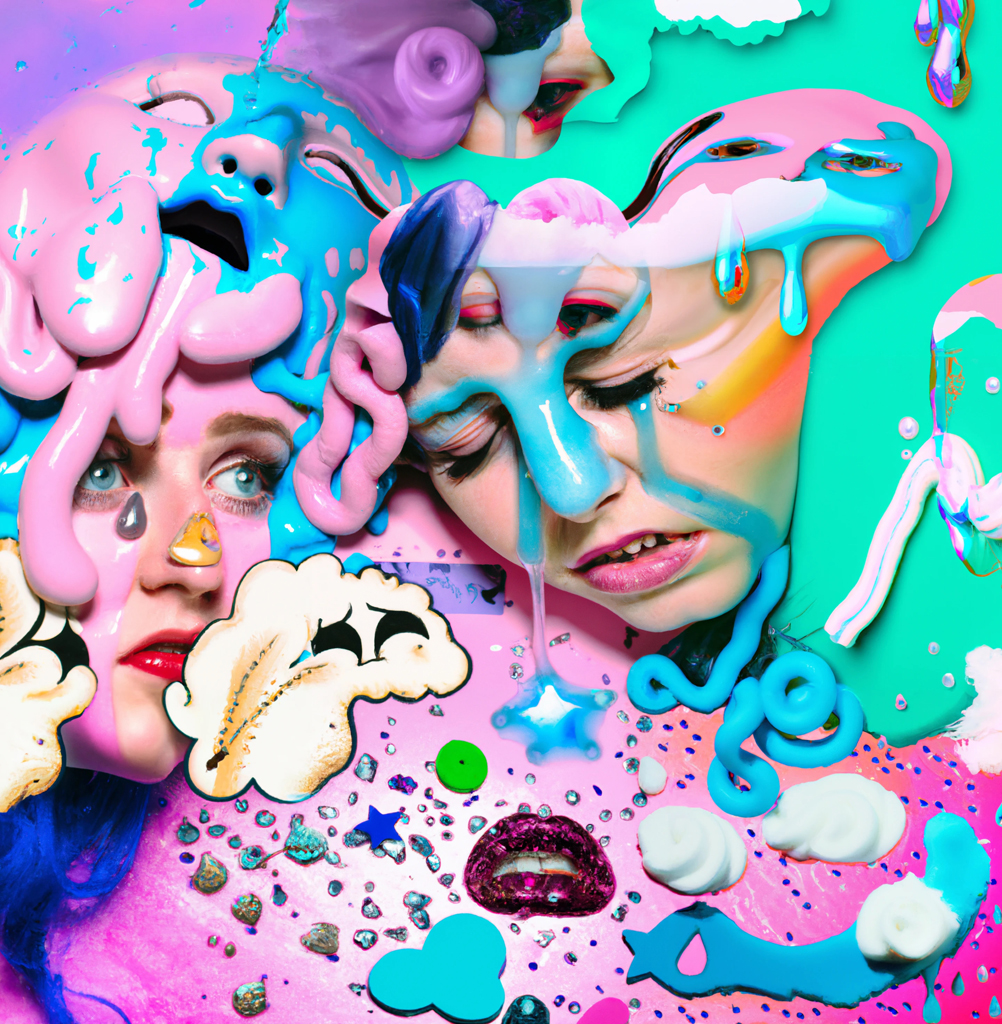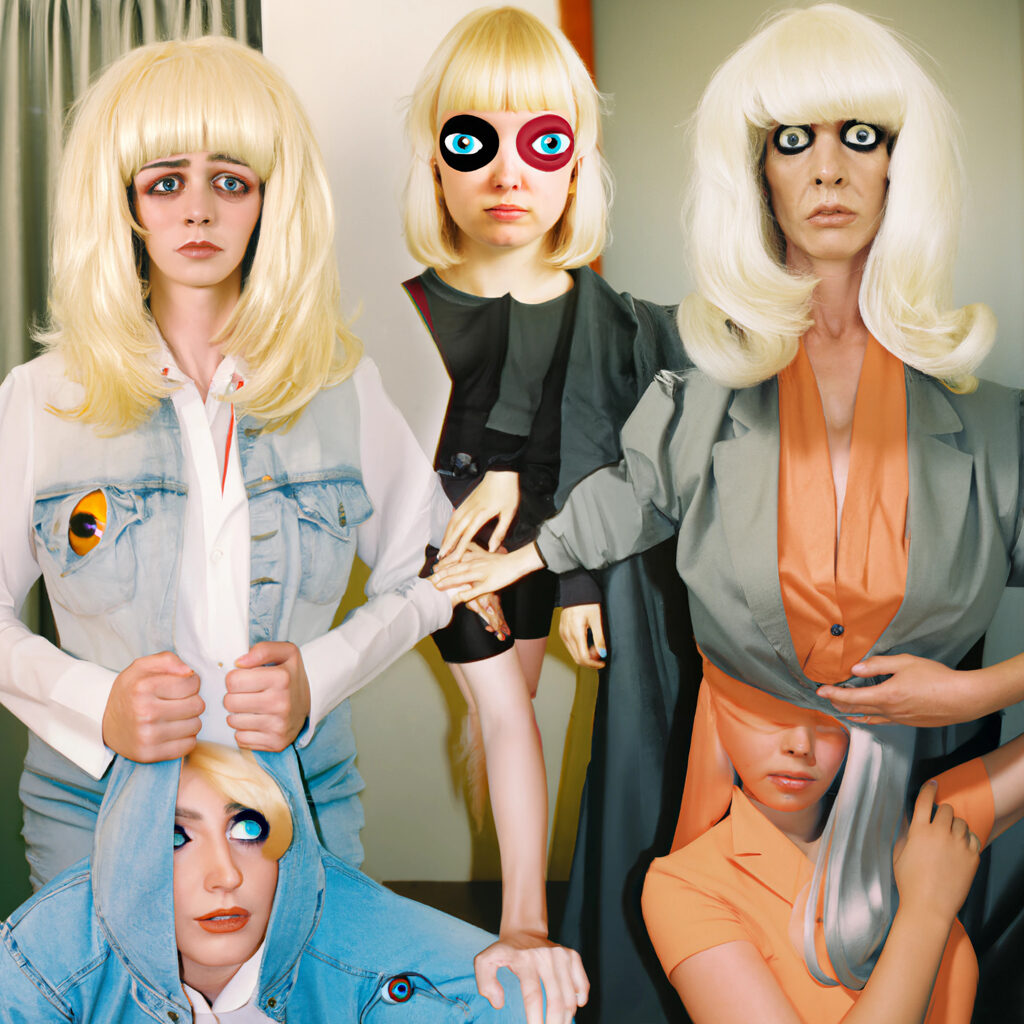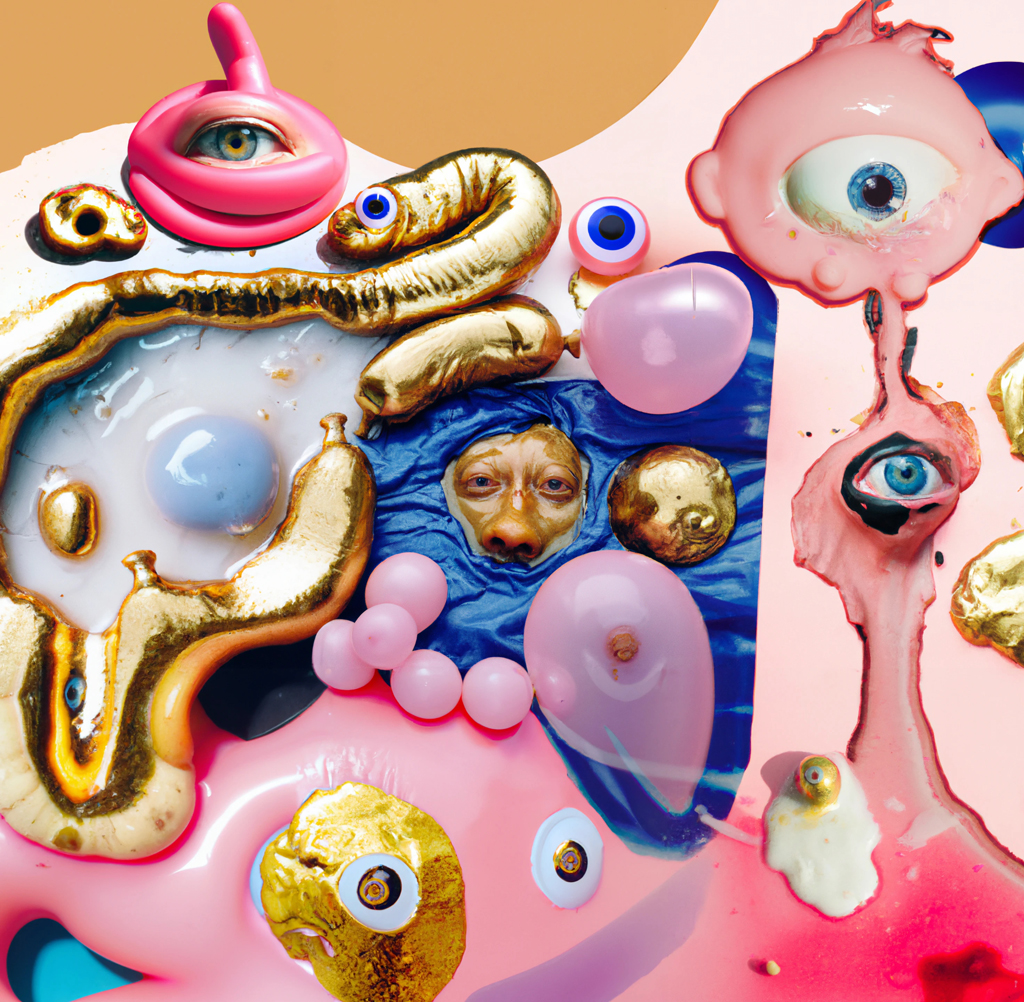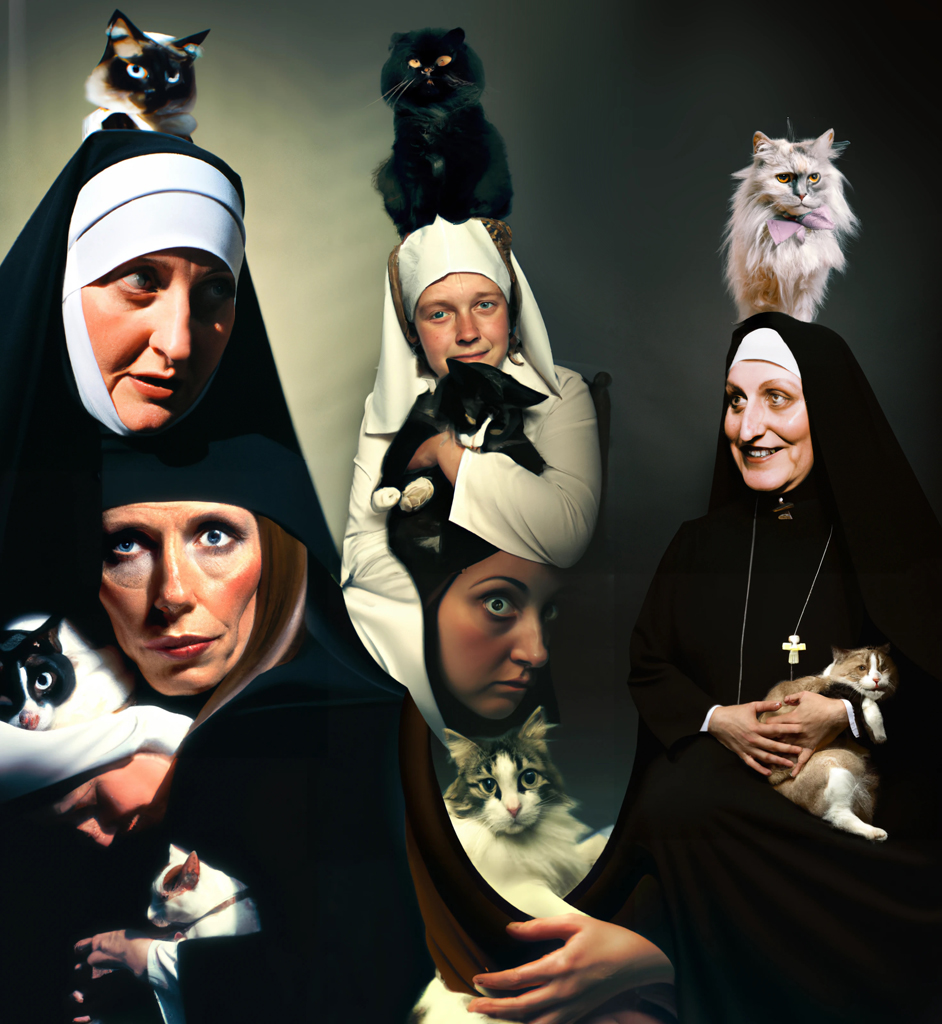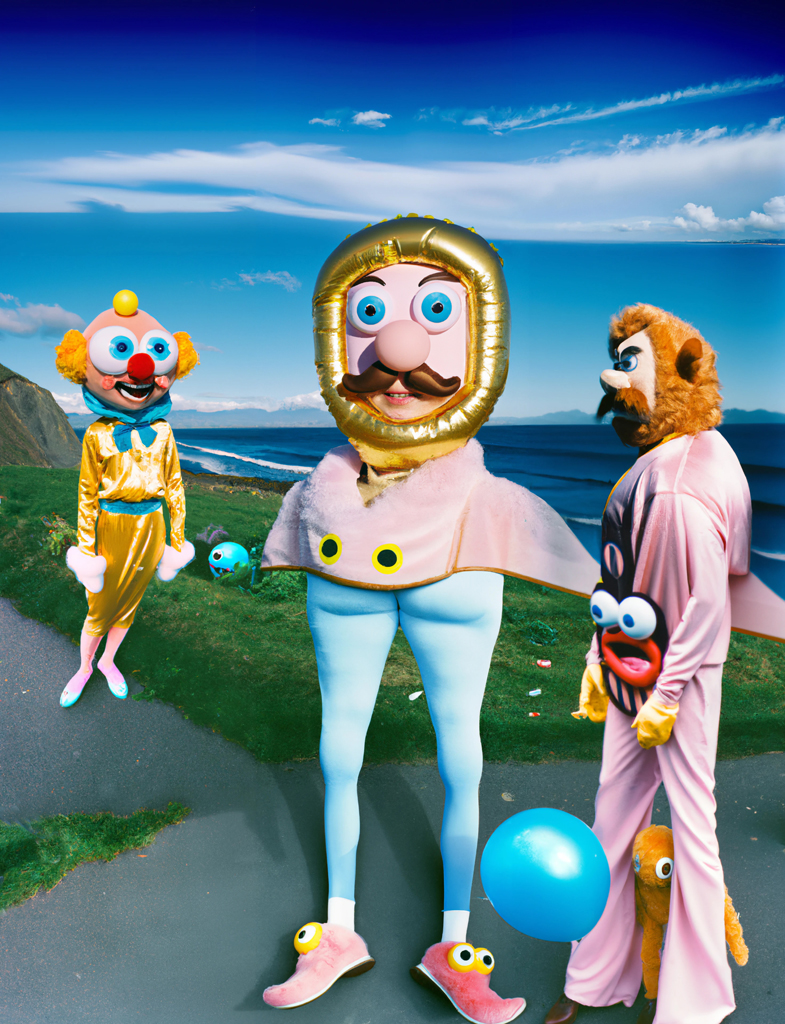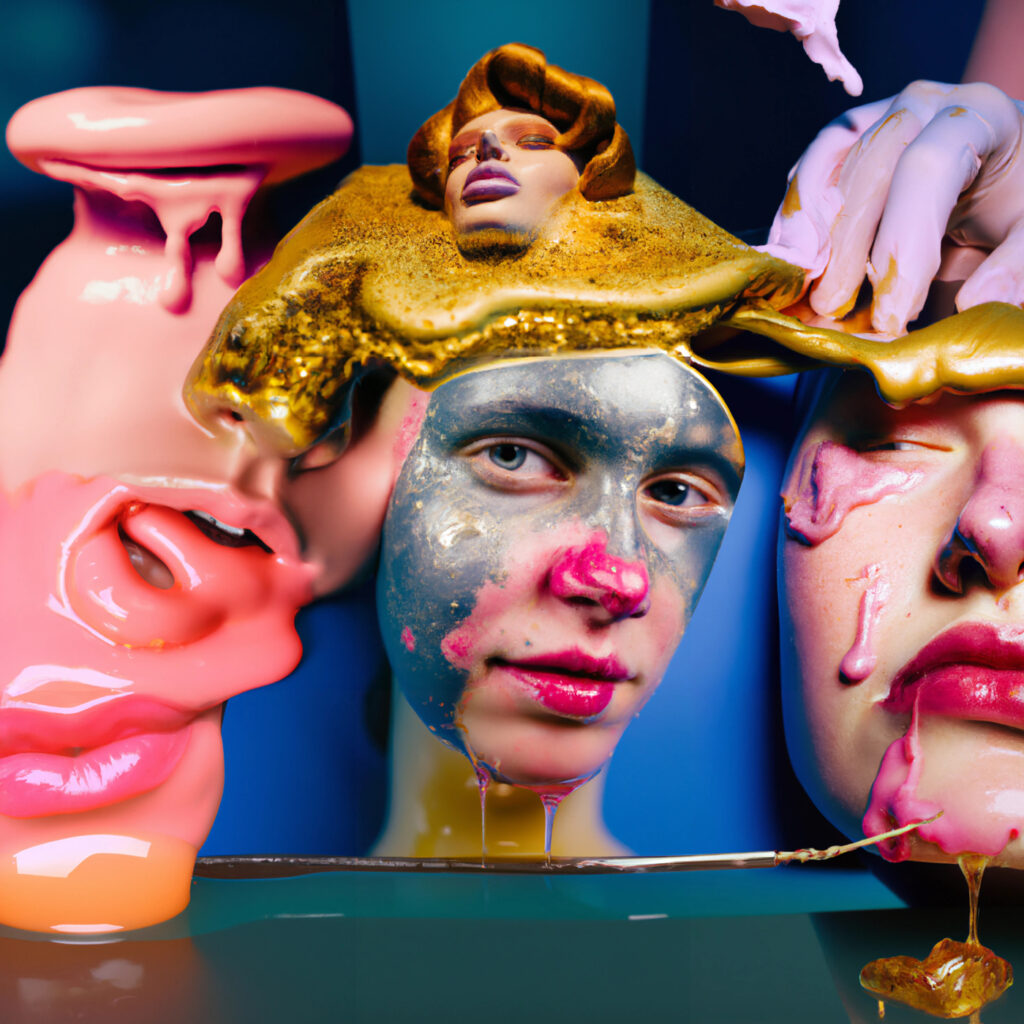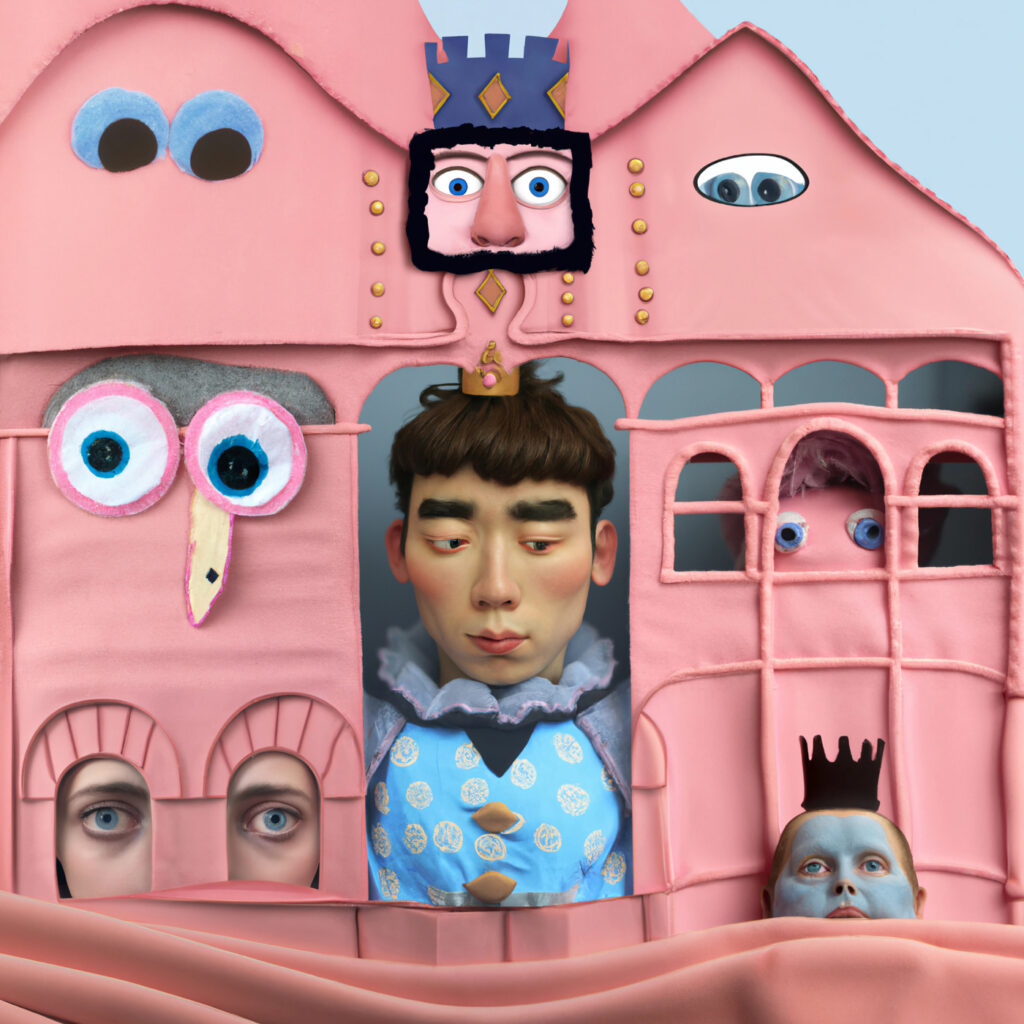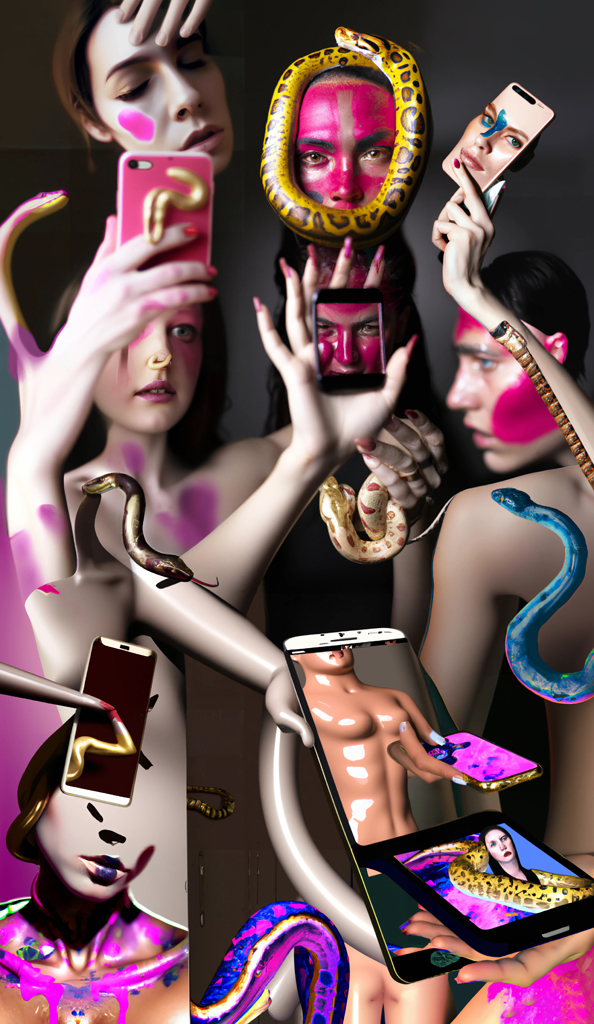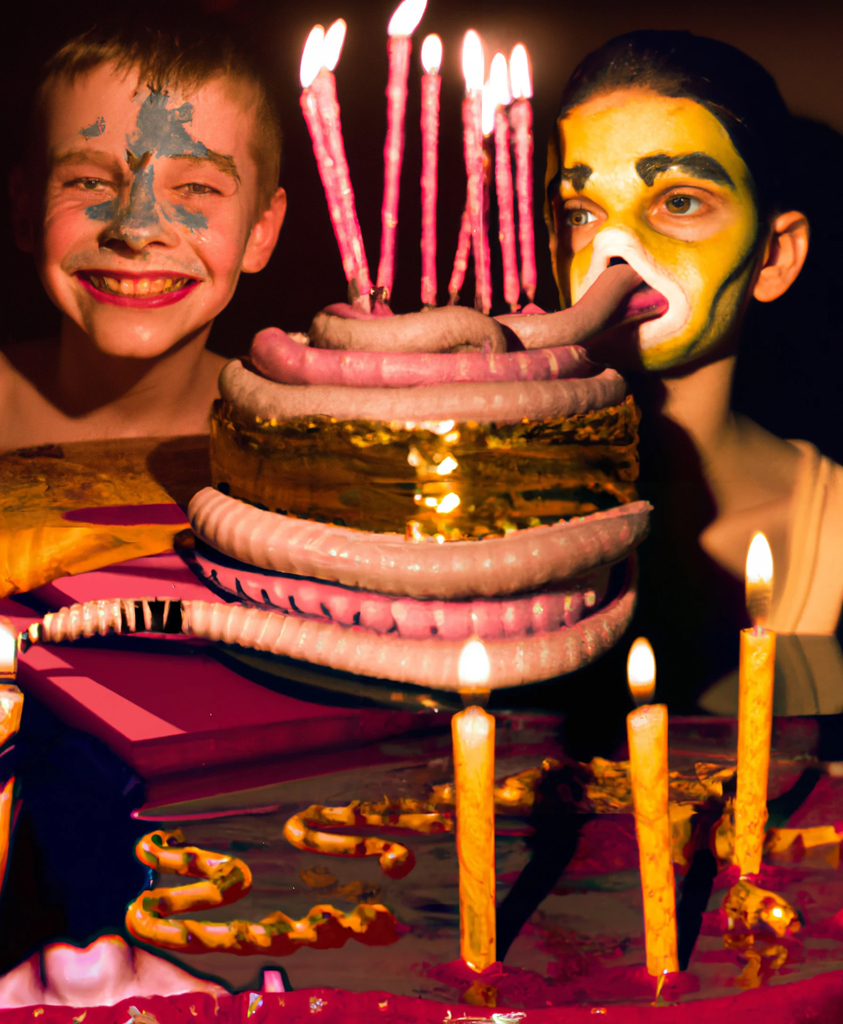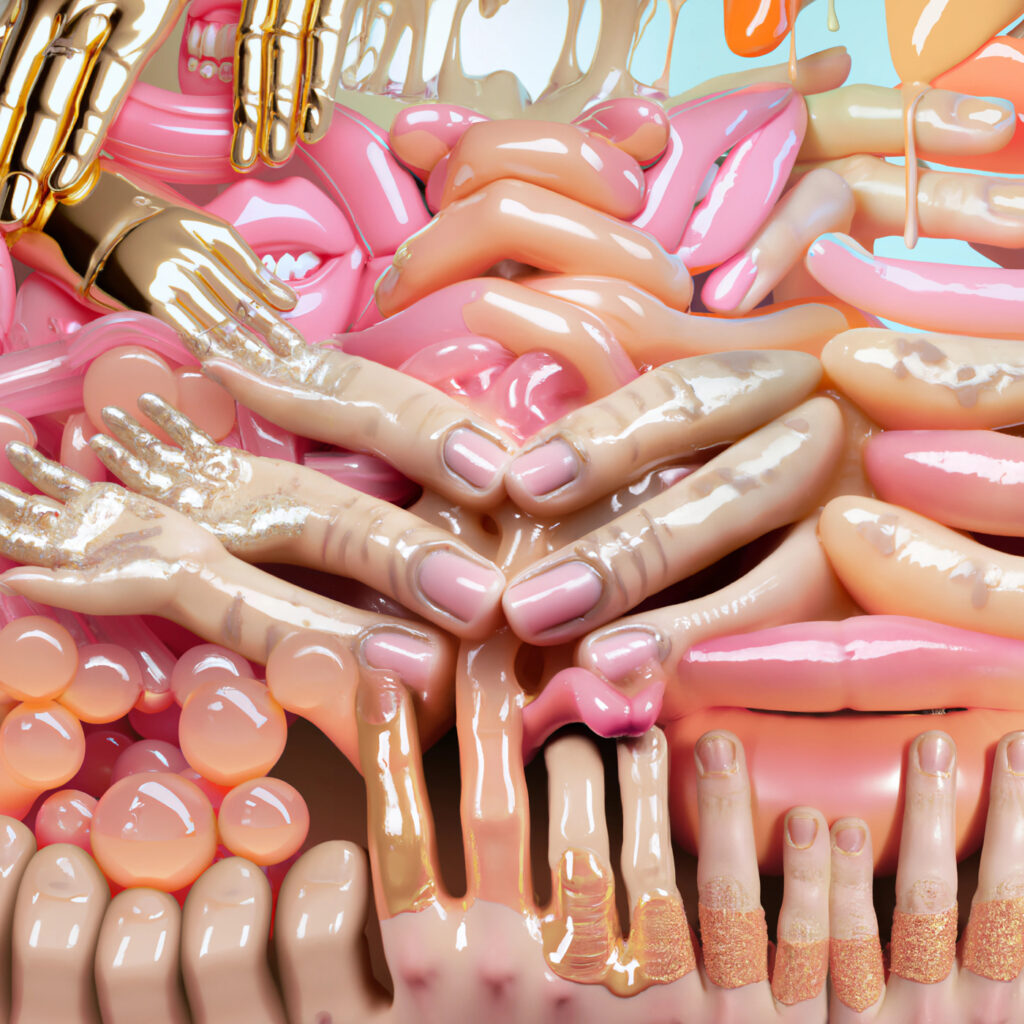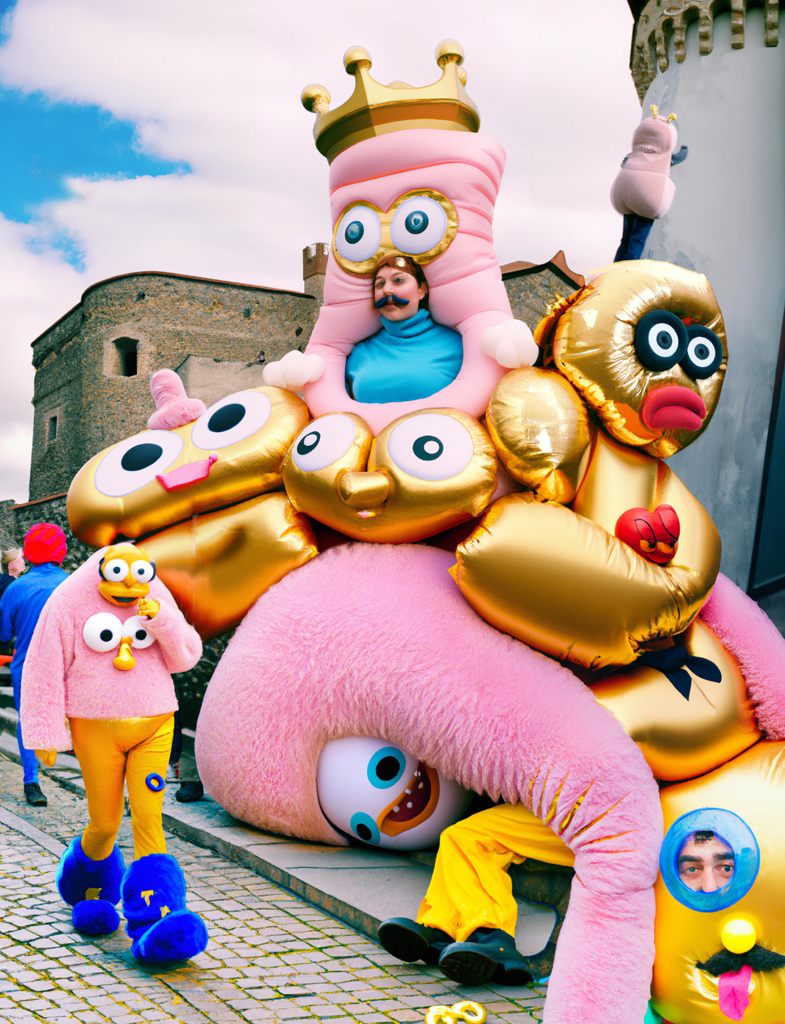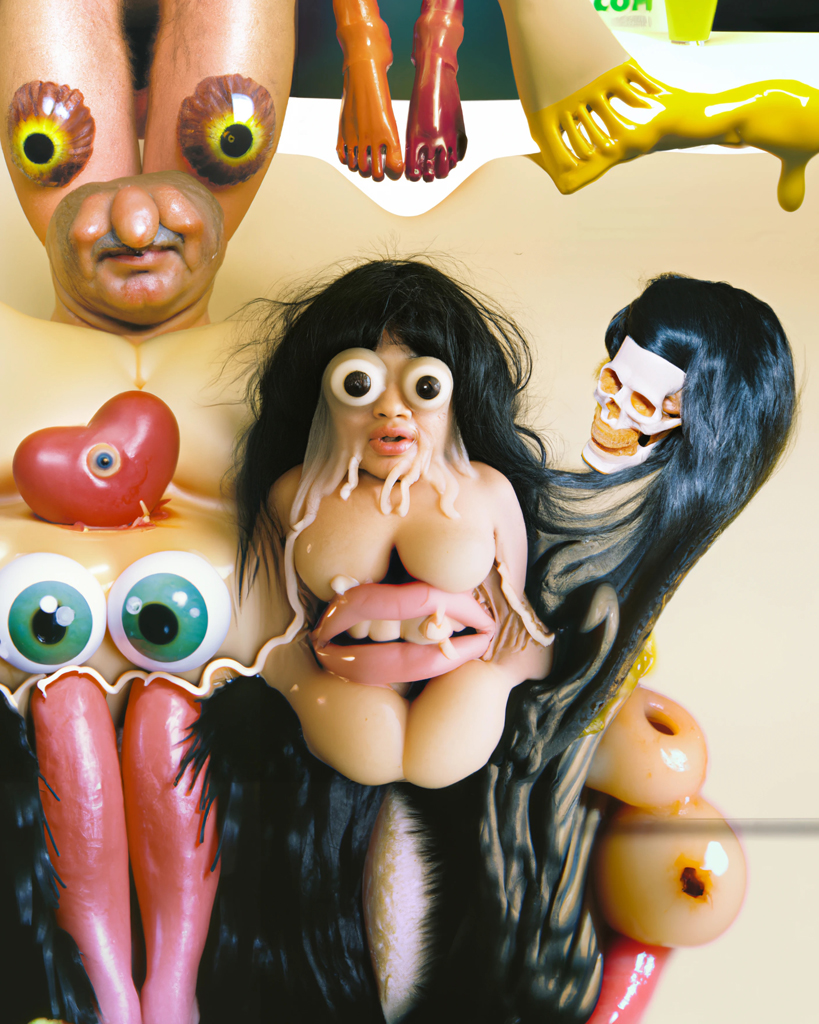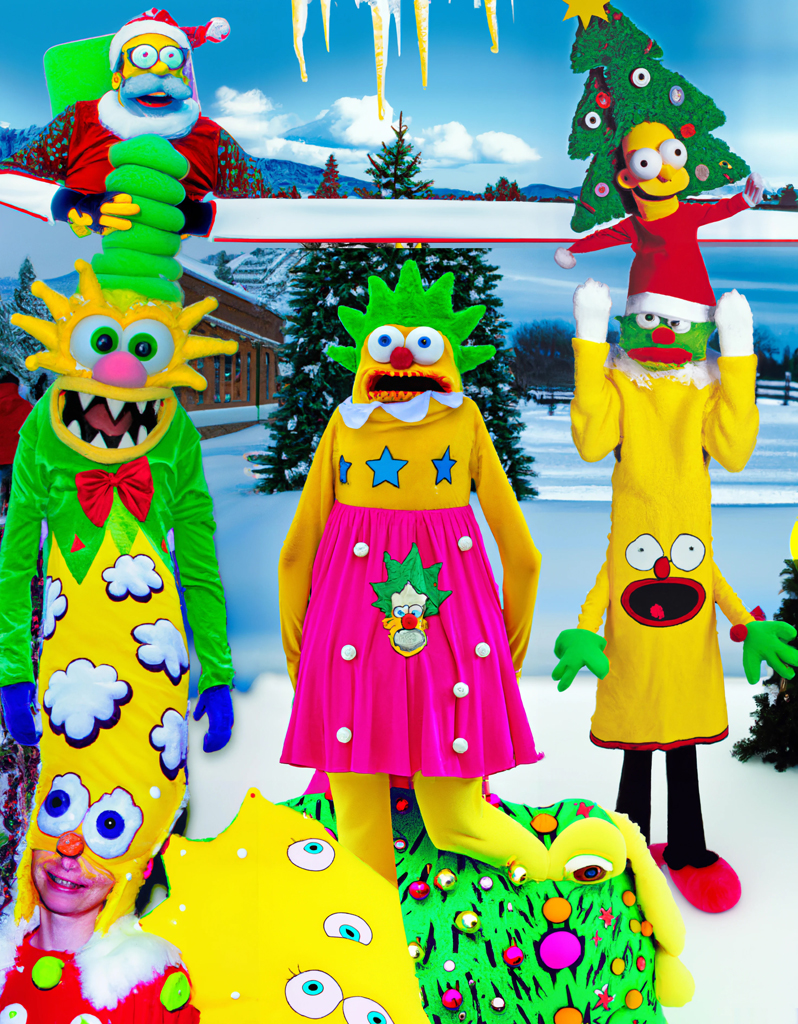Generating AI images through natural text prompts and image extension mechanisms create complex uncanny, neo-surreal images that can shift artistic styles seamlessly. As AI tools train on millions of images, there are endless, unpredictable possibilities of aesthetics and content. This allows for a queering of the imagery where bodies easily morph one into another, or into animals or objects – undoing normative representations of gender, kinship and embodiment with ease; and simultaneously illustrating the dissociated affect inherent in both mediated relations and traumatised individuals. Nonetheless, there are limitations to what this technology can produce as historical biases often related to race and gender are embedded in AI learning, and specific content is blocked by filters due to the companies’ ethics policies, including violence, disease, sexuality, and more. Trying to work around these limitations and find new ways to express these subjects is similar to the emergence of repressed trauma, or to queer culture for that matter; despite barrier mechanisms, these buried themes find subversive ways to express themselves.
